Blog

#bioPGH Blog: A Rainy Walk on a Spring Evening
 A resource of Biophilia: Pittsburgh, #bioPGH is a weekly blog and social media series that aims to encourage both children and adults to reconnect with nature and enjoy what each of our distinctive seasons has to offer.
A resource of Biophilia: Pittsburgh, #bioPGH is a weekly blog and social media series that aims to encourage both children and adults to reconnect with nature and enjoy what each of our distinctive seasons has to offer.
Rainy evenings in the spring are some of the most surprisingly perfect moments to explore the outdoors! Last night, the temperature hovered just above 50 degrees Fahrenheit, and a steady drizzle lingered between the moments when the rain paused. If you held your flashlight at just the right angle into the mist, you could even see the tiniest beads of moisture suspended in the air.
Hoping to spot some amphibians, a small group of us waited for dark last night and began an annual trek into the wet evening in search of salamanders and the frogs we could hear calling in the distance. Most of the frog and salamander species in our area breed at this time of and year, in particular on these early “warm” rainy nights. A few weeks ago, we talked here about vernal pools, and last night, that was exactly where we were headed. And we were not disappointed! As soon as we had stepped outdoors, we had heard spring peepers calling, so it made perfect sense that we saw a few of them first thing. Check out some of what we saw below!
Spring Peepers— Pseudacris crucifer
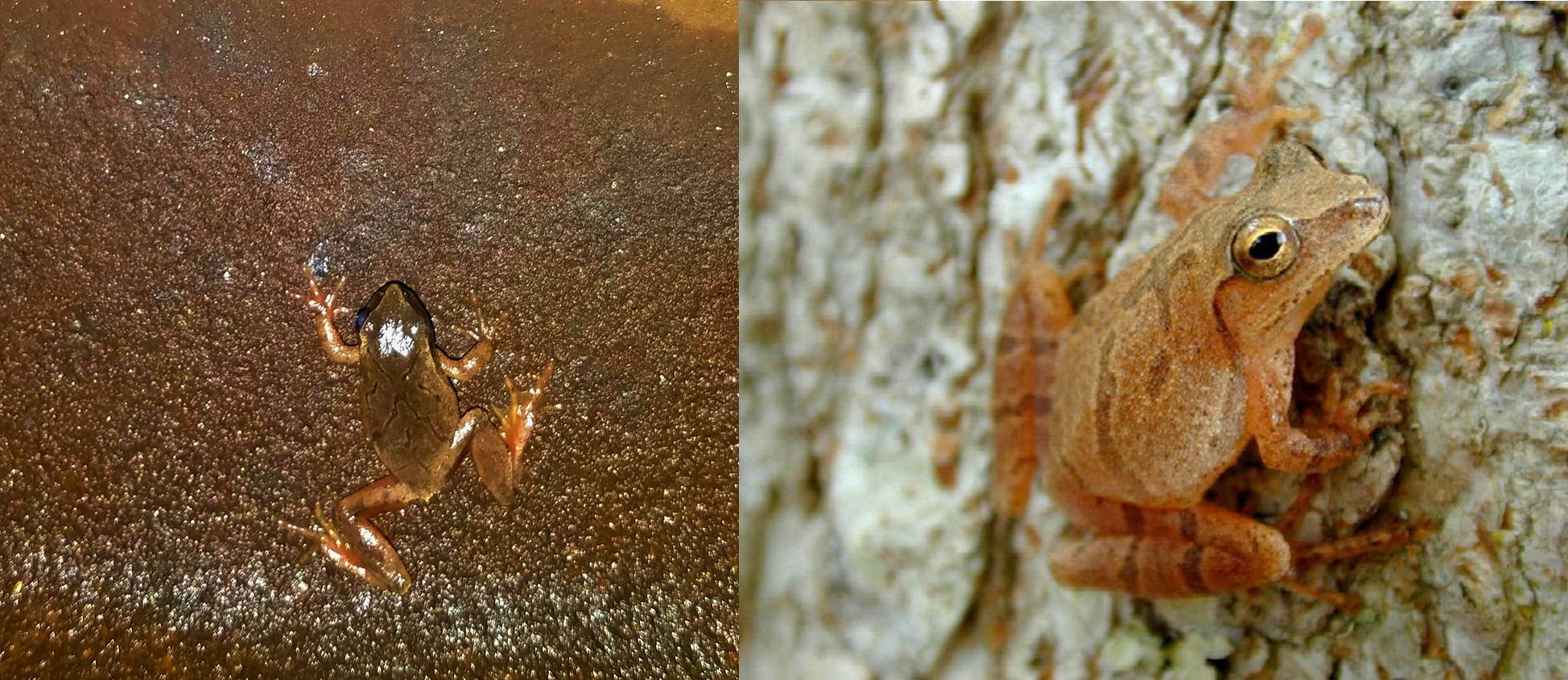
Right, Spring Peeper near Pine Creek, 28 March 2018. Left, photo credit: USGS.
The chorus of spring peepers was so loud, we were able to take the audio recording below!
Males called loudly around the vernal pools, doing their best to attract females. Like most frogs, they are external fertilizers, meaning sperm and eggs are released into the water of a pool or marsh to fertilize. Spring peepers’ eggs hatch only 1-2 weeks after fertilization, and the tadpoles morph into adults after approximately two months.
Pickerel Frog— Lithobates palustris
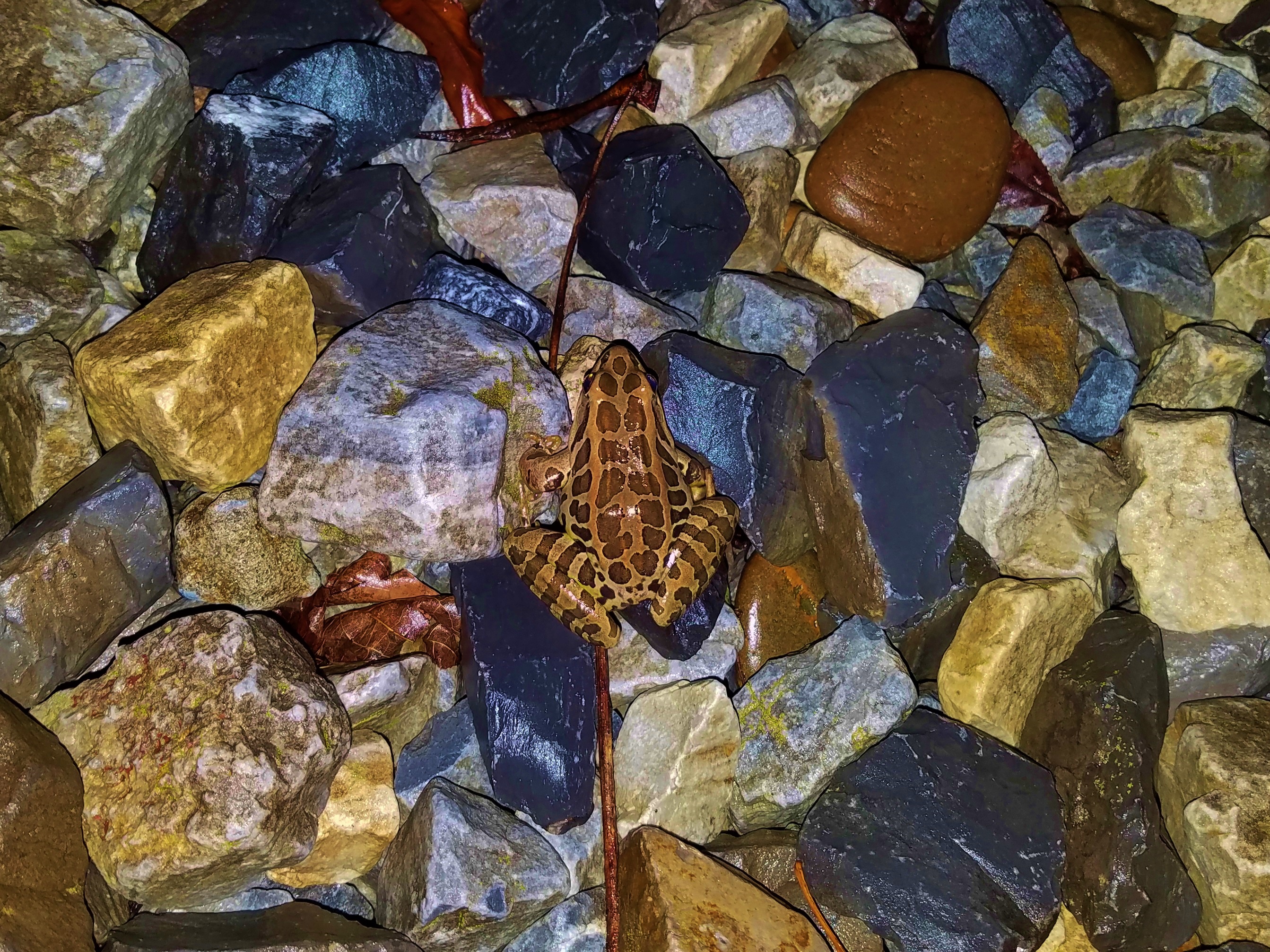
In the summer, pickerel frogs are found in wooded or meadow areas, but in springtime, they can be spotted near calm and quiet water sources for laying their eggs, making vernal pools a safe choice. Compared to the high peeps of the peepers, their call sounds like a low, slow version of just the first half of “rib-bit.”
Wood Frog— Lithobates sylvaticus
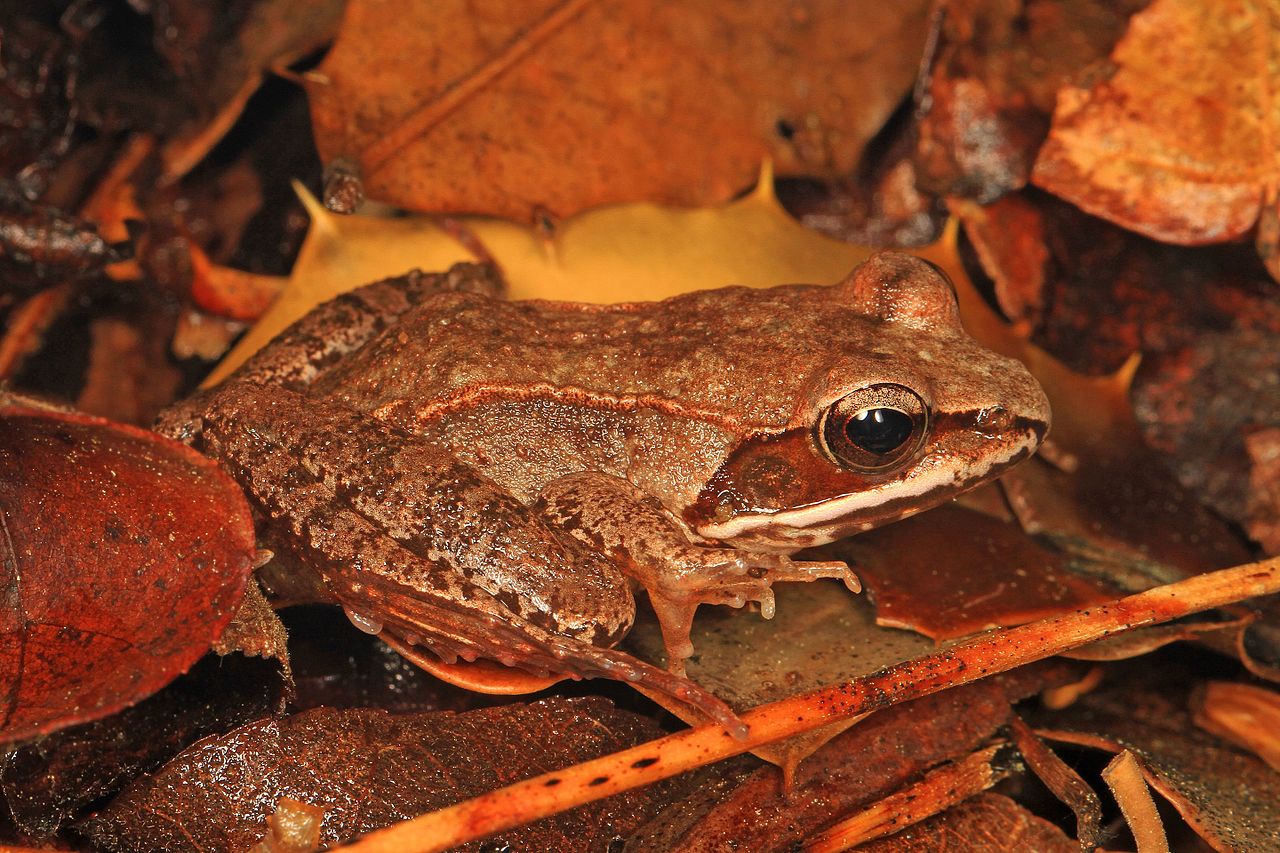
Photo credit: Judy Gallagher, CC-BY-2.0
At first listen, it might almost sound as though ducks were joining in a chorus of peepers. Most likely, though, that is the sound of wood frogs! We heard more wood frogs than we saw last night, but these frogs are an expected guest at vernal pools in the spring. During the rest of the year, they inhabit wooded areas (as their name suggests), but they head to water sources to breed.
Red-spotted newt— Notophthalmus viridescens
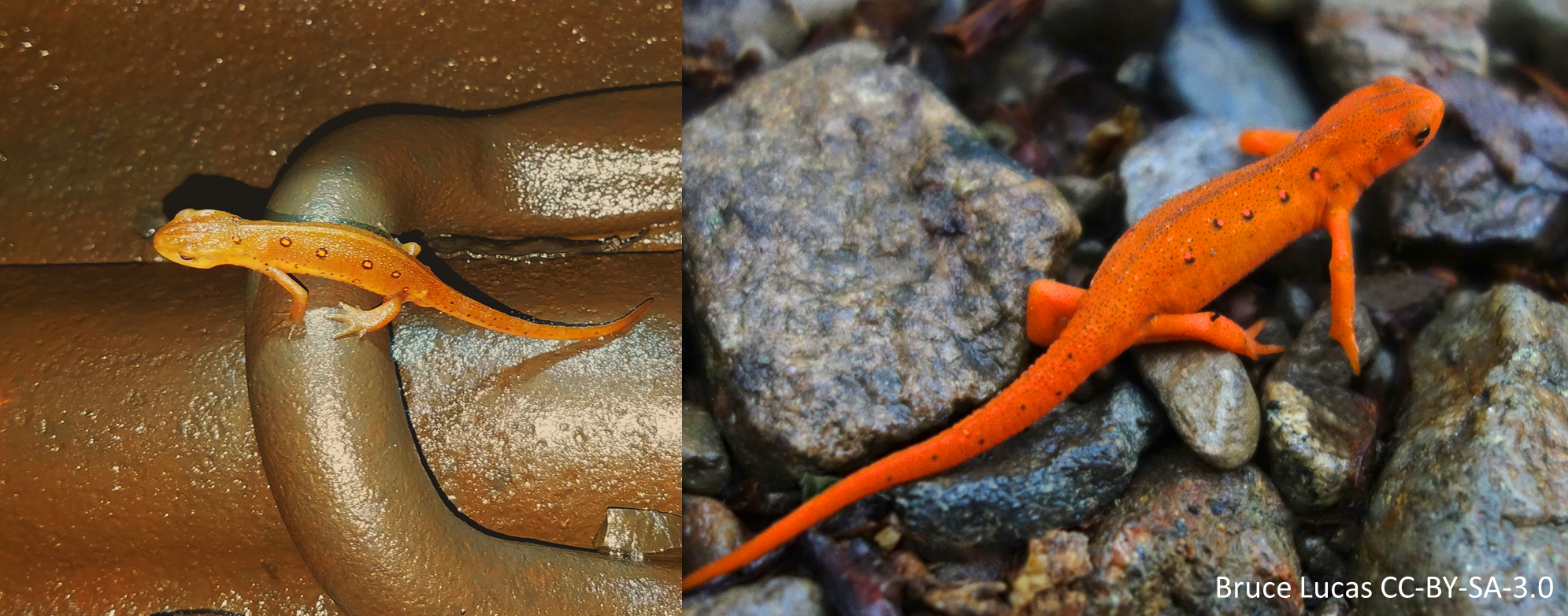
Left: Red-spotted newt on railroad tracks near Pine Creek, 28 March 2018. Right, photo credit Bruce Lucas.
While looking for salamanders, we saw a newt! What is the difference between a salamander and a newt? Well, newts are actually within the family Salamandridae, so they are a kind of salamander. Newts tend to have dry, bumpy skin while the rest of the salamanders tend to have wet, smooth skin (nature rarely operates in absolutes). Salamanders also have costal grooves—little ridges along their sides that almost look like the ridges of their ribs (though they aren’t). Newts are smooth along their sides. And, of course, newts, but not salamanders, may lead someone to begin quoting Monty Python.
Princess Pine—Lycopodium sp.
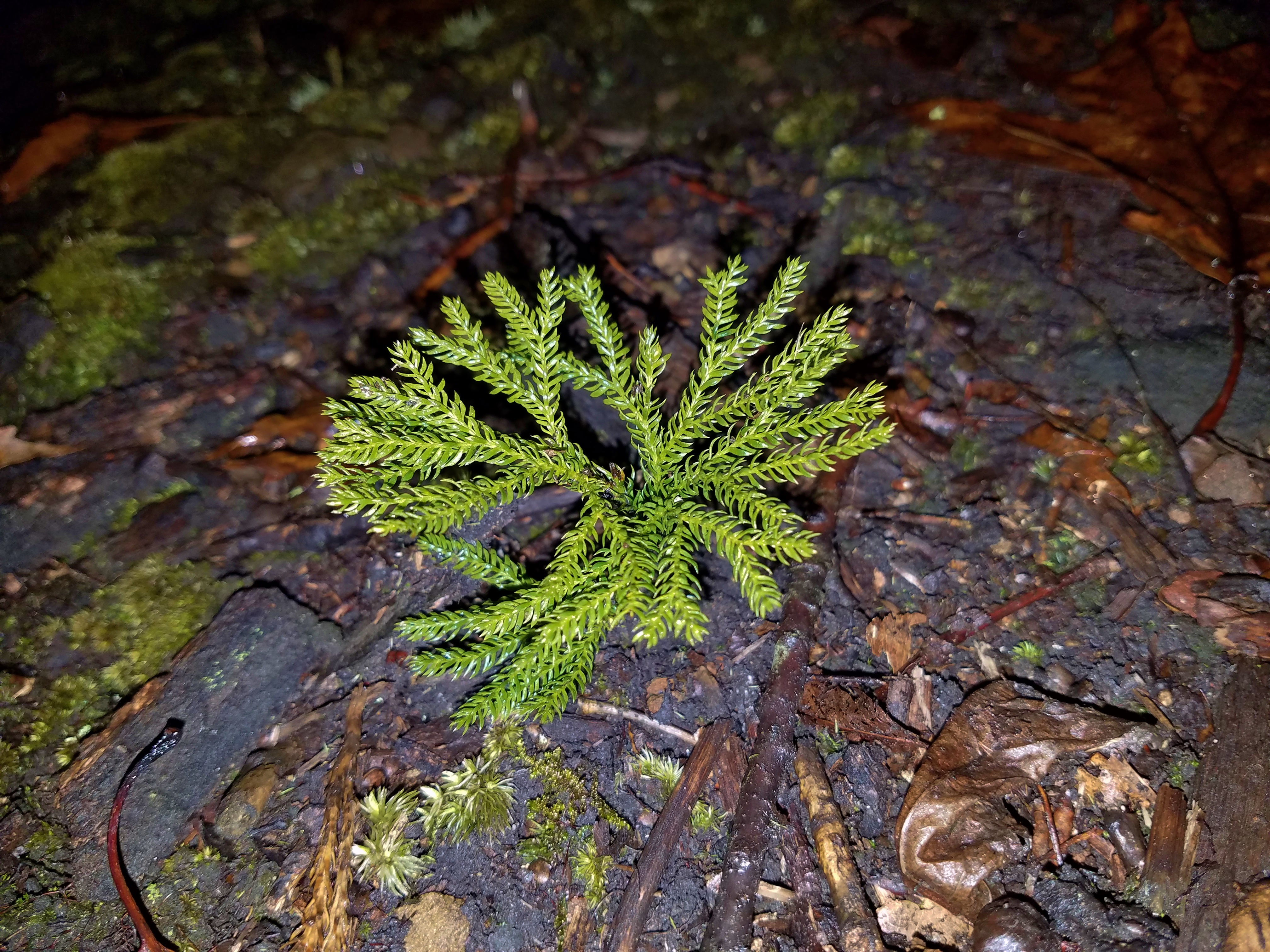
Not a pine or even a conifer at all, this little plant is a type of club moss—a “fern ally” and a plant that produces spores to reproduce rather than seeds.
Fairy Shrimp—Family Chirocephalidae
These little Crustaceans are often found in vernal pools. Their adult life spans are fairly short, but their eggs can survive being completely dried until the following spring when the vernal pool fills again.
Spotted Salamander— Ambystoma maculatum
This was what we were truly hoping to see! Spotted salamanders are a type of terrestrial mole salamander, which means the vast majority of their time is spent underground. The most likely time to “spot” them is during their breeding season: these first few warm rainy nights of the year.
The rare evenings in the spring with just the right temperature and just the right amount of rain are tricky for us to catch and take advantage of, but they produce a moment that reminds just how much life surrounds us—even in our neighborhoods and towns. We are surrounded by nature and a part of nature. Even if you can’t make it out in these evenings, I hope you enjoyed reading along and imagining yourself in the bustling magic of the outdoors this time of year!
Note: Thank you to Dr. Brady Porter of Duquesne University for leading a group of nature enthusiasts into the glorious soggy weather and for providing expert insight and information.
Resources
San Diego Zoo: Newts and Salamanders
PA Fish and Boat Commission: PA Amphibians and Reptiles

